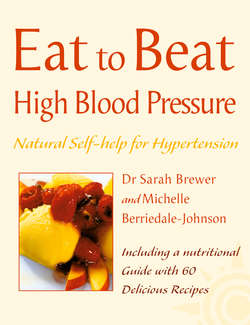Читать книгу High Blood Pressure: Natural Self-help for Hypertension, including 60 recipes - Michelle Berriedale-Johnson - Страница 10
DEVELOPMENTAL FACTORS
ОглавлениеFascinating research has suggests the way you develop during the first few weeks of life as an embryo may affect your future risk of high blood pressure and other cardiovascular diseases in adult life. This is probably linked with lack of micronutrients (vitamin and minerals) in the mother’s diet, which affects the way your arteries are laid down. Researchers have found, for example, that:
Low birth-weight babies maybe more likely to develop high blood pressure as adults. Average adult systolic BP increases by 11 mmHg as birth weight goes down from 7.5lb to 5.5lb.
The size of the placenta may be important – average systolic blood pressure rises by 15 mmHg as placental weight increases from 1lb to 1.5lb.
The highest blood pressures occur in men and women who were born as small babies with large placentas.
Risk of high blood pressure in later life also increases:
– as a baby’s birth length decreases
– as the ratio of a baby’s head circumference to the length of the baby increases from less than 0.65 to 0.7 or more.
– if the mother’s blood haemoglobin level was low during pregnancy
– if maternal nutrition was known to be poor.
Lack of important nutrients – including vitamins, minerals and essential fatty acids – during the first few weeks of embryonic life is thought to trigger the development of abnormal arterial and blood circulatory patterns. These probably result from an imbalance between the placenta and baby. This is supported by research linking fingerprint patterns with the risk of developing high blood pressure in later life. Fingerprints are laid down in the womb in the first few weeks following conception. Their patterns are linked to the degree of bumpiness and swelling of the developing fingertips, which is related in turn to irregular blood circulation.
Fingerprint patterns take the form of arches, loops or whorls, and the more whorls you have, the more likely you are to become hypertensive in later life. People with at least one whorl may have a blood pressure that is 6 per cent higher (8mmHg) than people with no whorls. BP then generally increases as the number of whorls increases, up to the maximum number possible, which is ten (two per digit). The average number tends to be two or three. Long, narrow hands are also associated with higher blood pressure, and both effects are more marked on the right hand.
Inherited and developmental factors are not the sole causes of high blood pressure, however. Something else has to happen in any individual before blood pressure goes up, and this is where environmental factors come in. These interact with inherited factors in individuals whose genes predispose them to hypertension to produce high blood pressure in later life. If several environmental factors linked with high blood pressure interact together, your risk of high blood pressure will be even greater.
